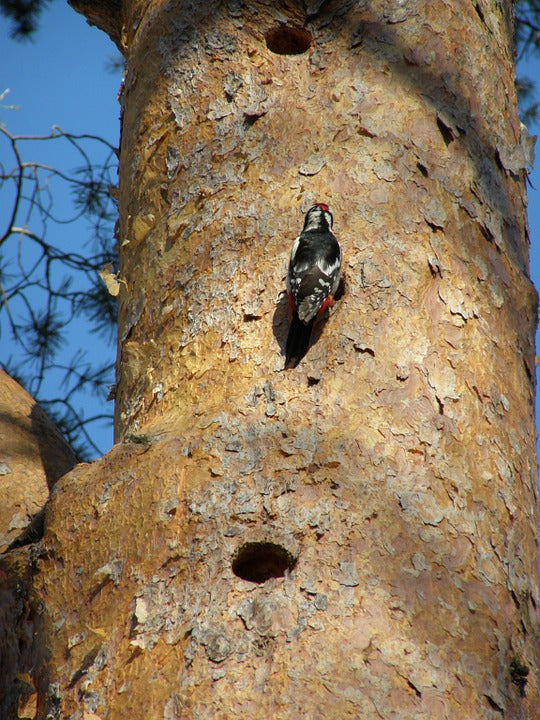Offer
Provide additional details about the offer you're running.
Provide additional details about the offer you're running.
Provide additional details about the offer you're running.

Walk outside on any given spring morning and you will undoubtedly be treated to the pleasing songs of your local birds, most likely trying to attract a mate. As birders, we spend countless hours listening to these beautiful songs and try to commit them to memory to help us with identification.
While the majority of your backyard birds will sing, there is one visitor that channels their inner voice in quite a different way. Woodpeckers will drum on objects like tree trunks, utility poles, chimneys, homes and any other material that will resonate sound. Like songbirds, this is the woodpecker’s variation of their song and is what they use to accomplish their duties, particularly in the spring.
Their thick skulls are helpful in protecting their brains while they aggressively peck at trees and other solid objects and their bills are among the strongest in the avian world.
There are two main reasons a woodpecker will drum, much the same as many other birds you can find or hear in your backyard. Woodpeckers will drum to both attract a potential mate and to claim territory. By producing a strong drumming that can be heard for long distances, woodpeckers assert themselves as a dominant bird in the area, as their drumming is often easily recognized by other woodpeckers due to their consistent tempo and patterns.
While most of us have surely heard the familiar sound of a drumming woodpecker, we will often assume the bird is simply foraging for food or creating an area to house a nest and raise their young. While this is true, pay close attention to the time of year and also the type of tree these birds use. During the spring, the sound of a woodpecker working away at a tree is often a mating or territorial defense call or song. They will often use dead or hollow trees for these actions as well, searching out objects that will allow their sounds to be heard from as far as possible.
High Quality Blend